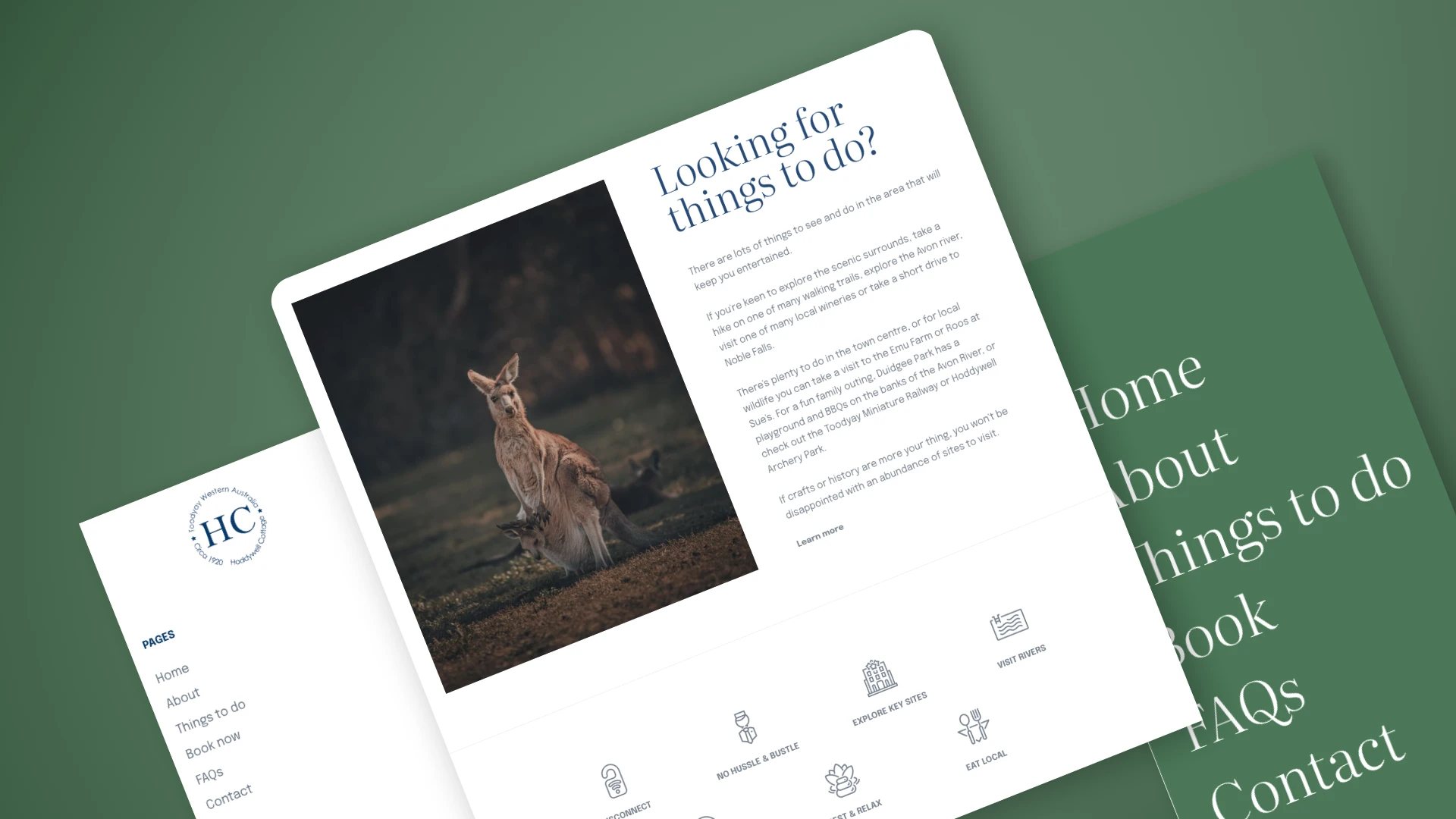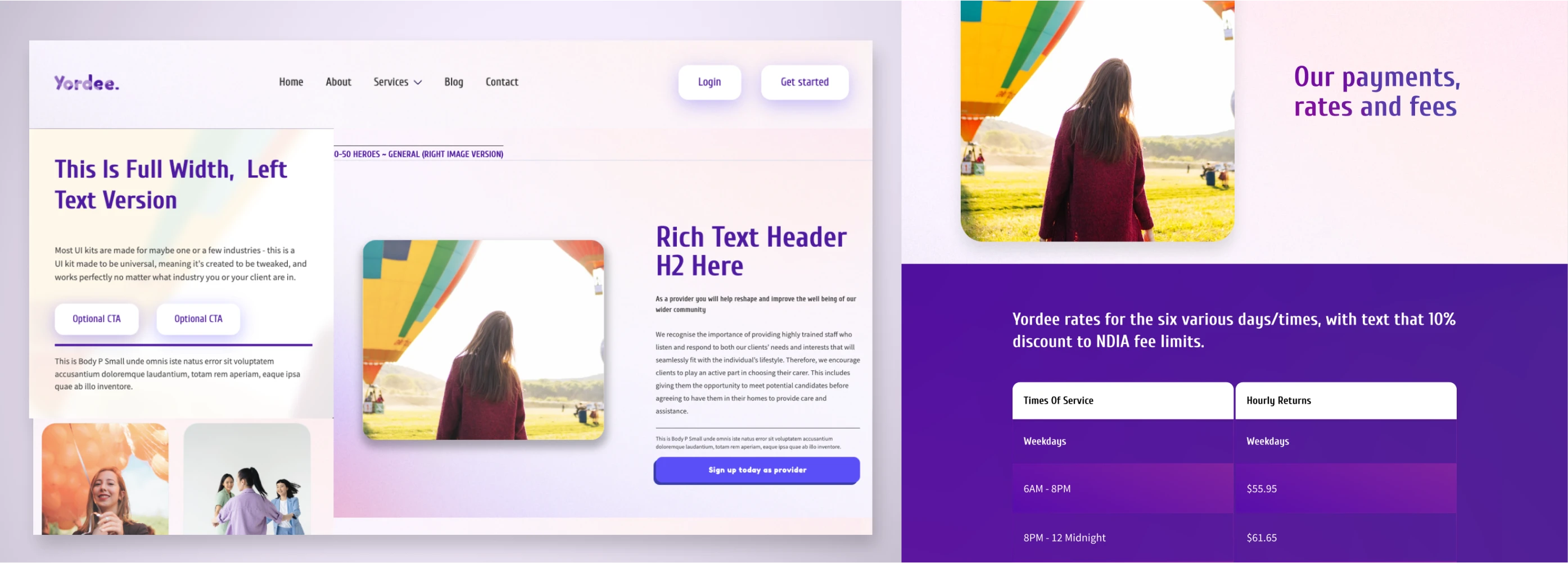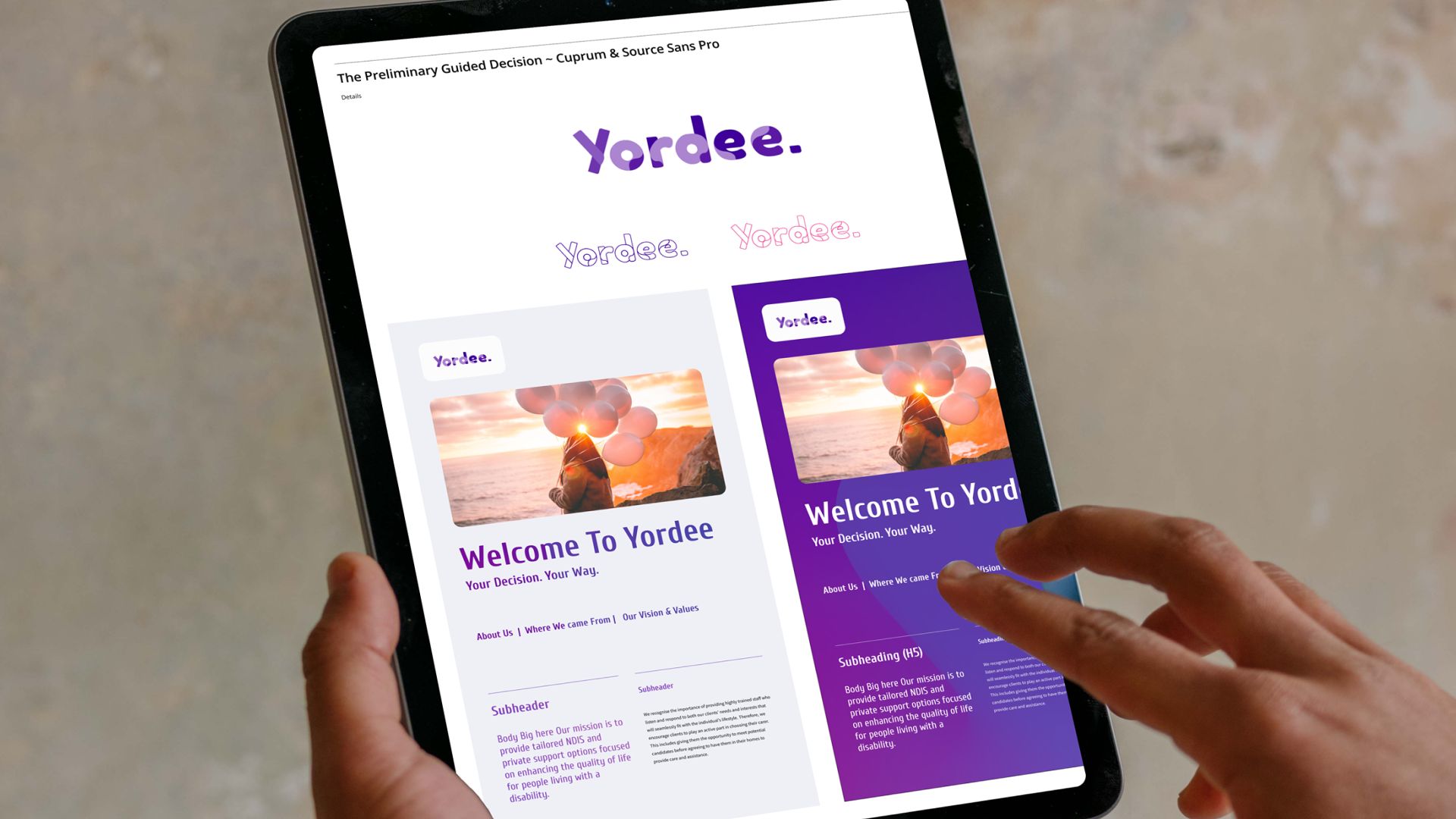Webflow Development Services Perth

Leading the way in Webflow
We lead the way with this powerful all-in-one web platform.
We love Webflow because it streamlines the front-end of a project.
The user-friendly interface is perfect for beginners, while its advanced features and customisable elements enable web administrators and designers to achieve remarkable results.
Webflow eliminates the need for coding, so you can create your website without relying on a developer to write code. Known as a 'code-free' tool, it lets users quickly build sites without the usual bottlenecks found in traditional website development projects.
Webflow has become a popular choice for small to medium-sized websites due to its robust feature set, with a focus on user experience and front-end optimisation rather than backend coding. While it has a steeper learning curve for more advanced animations and loading effects, we consider it one of the easiest platforms to use for basic content editing. Is it the right fit for your project? That depends on your current needs and your plans for your website in the coming years.

Perth Webflow Experts
Looking for Webflow development team in Perth?
Webflow is a cloud-based platform, which means you can access it from any device with an internet connection. It also offers a variety of technical features to make your web design and development work easier and more efficient. With Webflow and the team at Dapth, we can help you design visually stunning, responsive websites without writing a single line of code.
Our Webflow creatives can collaborate directly with your team in real-time using built-in team features. Webflow allows us to simply integrate with other tools and platforms and with simple hosting infrastructure, together we can publish your new looking website straight to the world with Webflow's fast and reliable servers. But that's not all!
Webflow also offers:
- A comprehensive library of design resources, such as templates, icons, and fonts.
- Advanced design features, such as animations and interactions.
- SEO tools to help your website rank higher in search engines.
- 24/7 customer support to answer any questions or issues you may have.
The benefits of using Webflow:
- A comprehensive library of design resources, such as templates, icons, and fonts.
- Advanced design features, such as animations and interactions.
- SEO tools to help your website rank higher in search engines.
- 24/7 customer support to answer any questions or issues you may have.
_web.webp)
Features we love
Webflow design tools and customisation features we love
Webflow provides a visual drag-and-drop editor for designing the layout, styling, and behaviour of your website. You can add and customise elements such as text, images, videos, forms, and buttons without writing any code. Webflow also offers advanced design features:
Flexbox layout
a powerful tool for creating flexible and responsive layouts.
Drop in code
the ability to drop in your HTML, CSS, and JavaScript to customize any element or add new functionality.
Animations and interactions
take interactions next level, create dynamic and engaging user experiences with built-in and custom animations and interactions.

Collaboration that flows
Project collaboration and workflows are built into Webflow
Webflow offers built-in features including:
Real-time Collaboration
Multiple team members can work on the same project at the same time.
Version Control
View and revert to previous versions of your project.
Role-based Permissions
Control who can access and make changes to your project.
Webflow also integrates with other tools and platforms, such as:
GitHub
Sync your Webflow projects with your GitHub repositories for version control.
Zapier
Connect Webflow to over 2,000 other apps for automated workflows and data transfer.
Packages that flow
Hosting for your Webflow website and SSL certificate in one package
Webflow’s pricing model (although initially confusing to some), is great. They bundle the cost of hosting and SSL certificate into one price. That saves time later on monitoring and renewing SSL certificates. Billing can then be automated and it all be one less thing to worry about. It also means you don’t need to host separate development environments as that can all be done within your one project. You can publish your site to the Webflow server with a single click, and it will be live and accessible to the public.
Webflow also offers a variety of hosting options, including:
Custom Domains
Use your own domain name for your website.
SSL Certificates
Secure your website with an SSL certificate for added security.
CDN
Distribute your website's static content across a global network of servers for faster loading times.

What makes Webflow great?
Webflow vs Wix vs WordPress vs Squarespace
There are many choices for a CMS (content management system) that may be considered similar to Webflow. These typically include WordPress, Wix, and Squarespace. Each platform has its own pros and cons. The starting point should always be a quick roadmap on what you need for a website in the immediate, and what you may need in the future.
The main thing to avoid is needing to rebuild a website every few years, the selected platform should be able to evolve with your needs as they grow (hopefully you are planning on growth – whatever that looks like for you). Here is a quick look at Webflow compared to Wix, WordPress and Squarespace.
Wix
Wix is another cloud-based CMS that offers a visual editor and pre-designed templates. It is considered to not be as flexible as Webflow in terms of design and customisation, especially for the user experience elements. Webflow is a better choice for those who want more control over the look and feel of their website and plan to evolve the site, optimising user interactions while still having a simple content editing functionality.
Webflow requires a bit more technical knowledge to use than Wix, but overall it is a more powerful platform that also has the ability to add custom code for anything extra you may want to add.
Wordpress
WordPress is a popular open-source CMS that is known for its extensive plugin library and customisability. It can be more complex to use than Webflow and may require some coding knowledge. WordPress relies on plugins, and typically gets hard to use (and slow) as the site grows and evolves. Webflow is a more user-friendly option for those who want a visual drag-and-drop editor and don't want to deal with the technical aspects of website development. If you have used WordPress, Webflow offers an experience similar (we say this lightly) to the Beaver or Elementor theme builders.
Squarespace
Squarespace is a popular CMS that offers a variety of templates and design options. Squarespace offers a larger selection of templates than Webflow, however Webflow enables users to build custom templates, which Squarespace does not. Squarespace has a pretty great set of e-commerce features, including inventory management, shipping and tax calculations, and payment gateway integrations. Webflow also offers e-commerce features, but it is not yet as comprehensive as Squarespace (or many other e-Commerce specific website platforms).
Squarespace has a built-in blogging platform that allows users to easily create and manage blog posts. Webflow does not have a specific built-in blogging platform, but it can mimic the approach with the CMS database features and page templates (in combination with automation).

Why Webflow?
Should you select Webflow for your website project?
When it comes to building a website, there are so many options to choose from. We’ve only lightly touched on options like Squarespace, Wix and WordPress. It is overwhelming. Some specialise in specific features, while others are more focussing on specifics (like Shopify for eCommerce). There pricing also varies, so comparing apples with apples seems impossible. While all these platforms offer tools for designing and building websites, they have some key differences that may make one a better fit for your needs than the others.
For example, Squarespace is known for its user-friendly interface and pre-designed templates, but it may not be as flexible in terms of design customisation. Wix is also user-friendly, but it does not have as many advanced design features as Webflow. WordPress is a powerful open-source CMS that is probably the most well known (due to its age) but it hasn’t evolved with modern frameworks and needs of the digital era (like all-in-one hosting and SSL certificate management), and it can be more complex to use for those new to the website world. Webflow stands out as a user-friendly, all-in-one platform that offers a visual drag-and-drop editor, advanced design features, integrations with other tools, with fast and reliable hosting.
The starting point is a conversation with someone who has exposure and experience across multiple technologies, with direct access to developers to ask the trickier (and more technical) questions. Speak to any of our team today for some help creating transparency.
_web.webp)